News
Canada real estate: Where home prices have grown the most
|
|
While average home prices across most provinces and territories have cooled considerably since reaching their peak in February, several markets are still seeing prices rise year-over-year.
According to the latest data released by the Canadian Real Estate Association (CREA), major markets such as the Greater Vancouver and Toronto areas, Montreal and Calgary all saw average home prices increase between September 2021 and September 2022. However, smaller real estate markets situated outside of these hubs saw higher annual growth rates by comparison.
This is because rising interest rates have a greater influence on home prices in larger, more expensive markets, said Shaun Cathcart, CREA’s senior economist and director of housing data and market analysis.
“Interest rates have a massively greater impact on places where the price to income ratio is much higher,” Cathcart told CTVNews.ca in an interview on Wednesday. “People need to be borrowing more closely to the limits of the stress test [in more expensive markets].”
Regions that saw home prices balloon during the pandemic, such as Ontario and British Columbia, are now seeing their annual gains shrink as buyers are faced with higher stress test rates, Cathcart said. On the other hand, affordable markets such as the Prairies and Maritimes may not have made the same kinds of gains, but did a better job of holding onto them, he said.
“In some of these more affordable places, [average prices] not only continued to climb for longer in the spring, they’ve also declined by less from then until now,” said Cathcart.
In Victoria, B.C., for example, the average price of a home rose 15 per cent from September 2021 to September 2022. During the same period, average home prices in Saguenay, Que., increased 13.9 per cent. Residents of Yarmouth, N.S., saw the highest annual growth of any real estate market in September 2022 with a rate of 21.7 per cent. These figures are MLS benchmark prices, calculated to reflect price trends based on the majority of homes in a given area.
However, these kinds of price gains are not likely to stick around as rising interest rates continue to drive down home prices, Cathcart said.
“Those year-over-year gains are rapidly shrinking with every month that goes by,” said Cathcart. “[October] might be the last month that you see so many markets that still have year-over-year gains.”
Below is a list of properties CTVNews.ca has gathered that are on sale in markets that have seen some of the highest annual growth rates across the country.
YARMOUTH
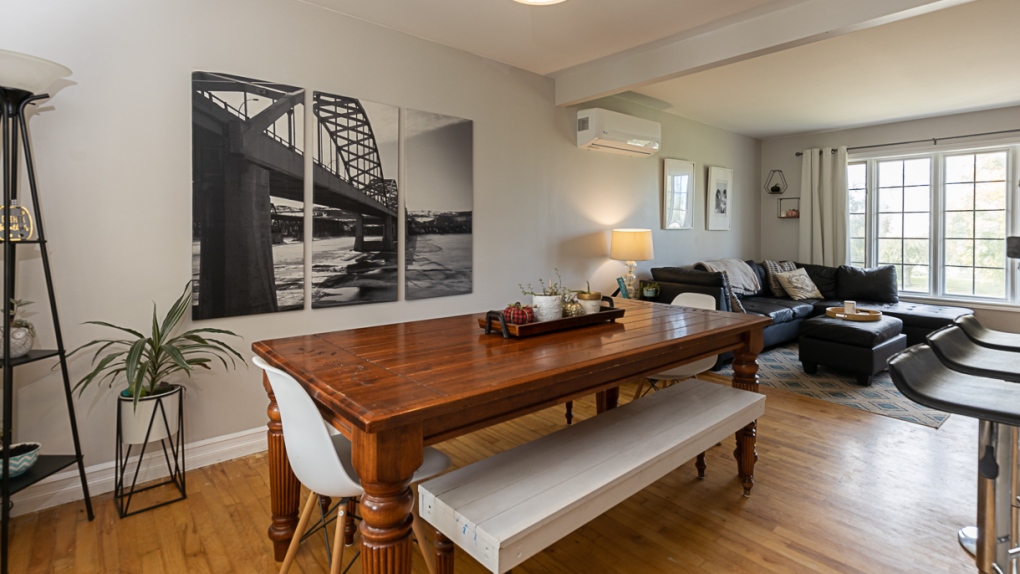

Type: House
Price: $339,900
Year Built: 1987
Property Size: 200.67 sq. m
Lot Size: under 0.2 hectares
Price Growth: 21.7 per cent year-over-year
This four-bedroom, two-bathroom home in Yarmouth, N.S., has a fully-fenced backyard, with a new deck and above-ground pool. The main floor has an open-concept living and dining area leading to a kitchen with a breakfast bar. In the basement is a laundry room with access to the backyard, as well as another room that can be used as an office or home gym.
GREATER MONCTON
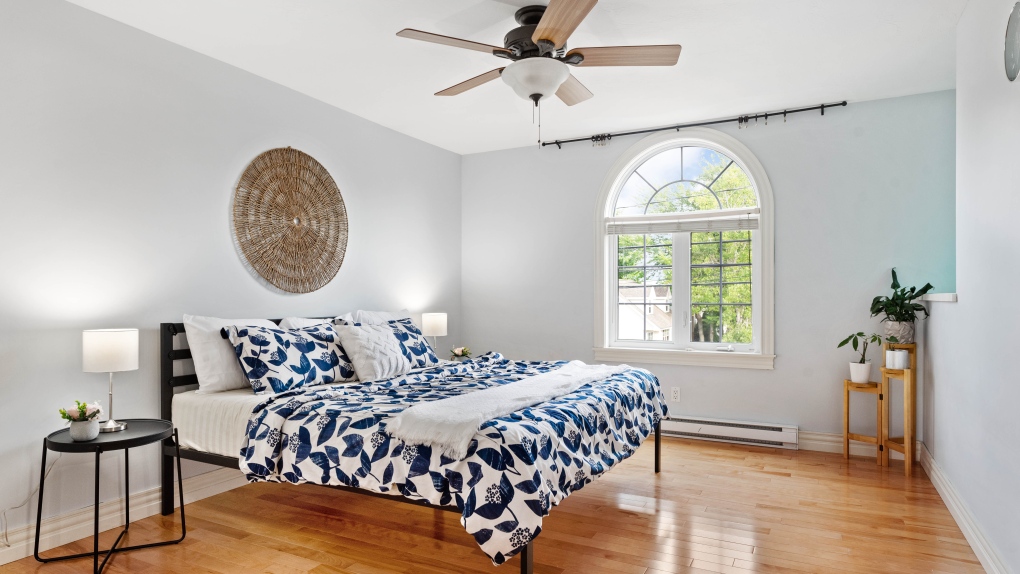

Type: House
Price: $349,900
Year Built: 2007
Property Size: 212.38 sq. m
Lot Size: 322 sq. m
Price Growth: 19.6 per cent year-over-year
Spanning nearly 213 square metres, this two-storey home has three bedrooms and three bathrooms. Hardwood and tile floors run throughout the main level, and the living room includes a propane fireplace. From the dining area, two sliding patio doors lead to a four-season sunroom that can be used year-round. The basement is also completely finished and has a separate side entrance.
ALBERTA WEST


Type: House
Price: $629,500
Year Built: 2013
Property Size: 147.44 sq. m
Lot Size: 1.59 hectares
Price Growth: 17.7 per cent year-over-year
Laminate flooring and modern finishes run throughout this rural home near Edson, Alta. Designer lighting on the main floor decorates the high ceilings, while the kitchen features granite countertops and an oversized island. Filling the rest of the home are four bedrooms and three bathrooms. A family room occupies the basement, along with a newly renovated bathroom complete with a tiled shower.
VICTORIA
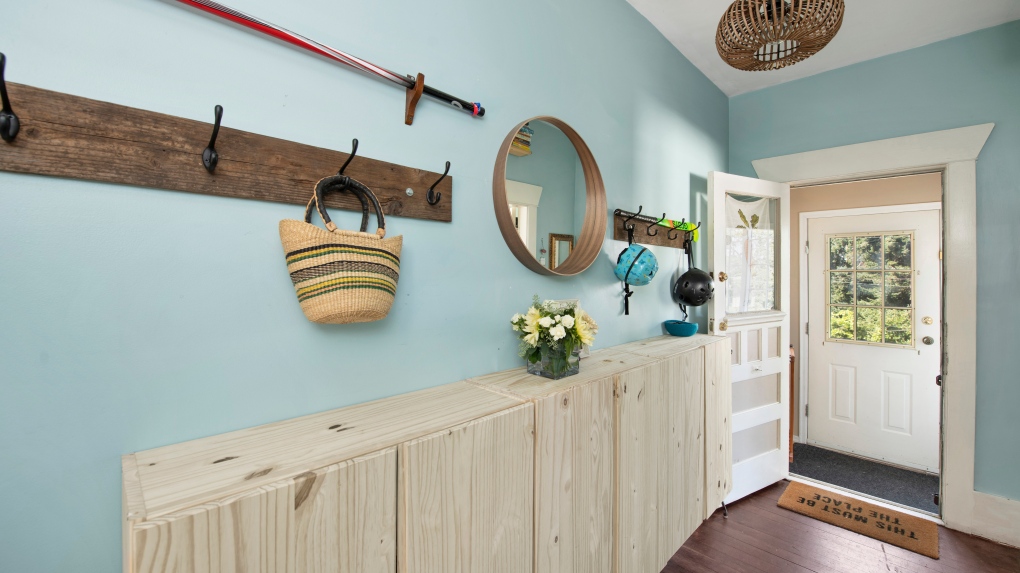

Type: House
Price: $839,000
Year Built: 1920
Property Size: 89.74 sq. m
Lot Size: 408.77 sq. m
Price Growth: 15 per cent year-over-year
Built in the 1920s, this character home features high ceilings and large windows. The one-storey home also comes with a small, detached garage that can be transformed into a workshop. Perched on a large rock, the house overlooks the Oaklands neighbourhood in Victoria, B.C., and is situated within walking distance of parks, schools and restaurants.
PRINCE EDWARD ISLAND
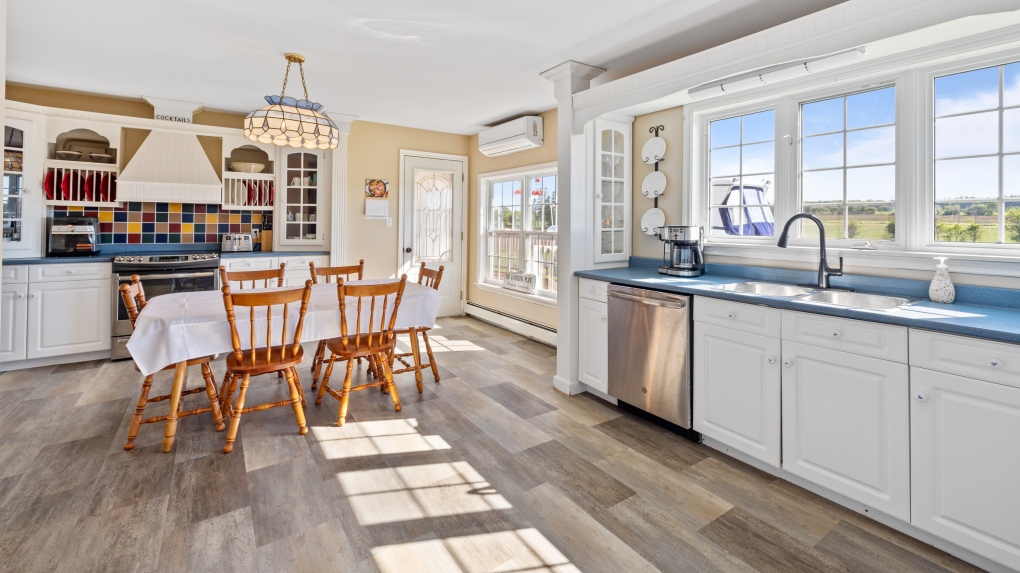

Type: House
Price: $399,999
Year Built: 2002
Property Size: 272.39 sq. m
Lot Size: 0.26 hectares
Price Growth: 14.5 per cent year-over-year
This four-bedroom, four-bathroom rural home is located between Charlottetown and Summerside, P.E.I. The secluded lot features patios at the front and back of the house, as well as a gazebo in the backyard. On the main floor is a kitchen, formal dining room, living room and office. The main bedroom on the top floor has an ensuite with a double sink, full shower and separate jet tub.
SAGUENAY


Type: House
Price: $365,000
Year Built: 1974
Property Size: 178.37 sq. m
Lot Size: 0.2 hectares
Price Growth: 13.9 per cent year-over-year
Situated in a quiet neighbourhood in Saguenay, Que., is this four-bedroom, one-bathroom home. The large lot backs onto a forest, and there are no neighbours behind the home. The two-storey house also has a finished basement, and is located near essential amenities as well as the Chicoutimi River.
CALGARY
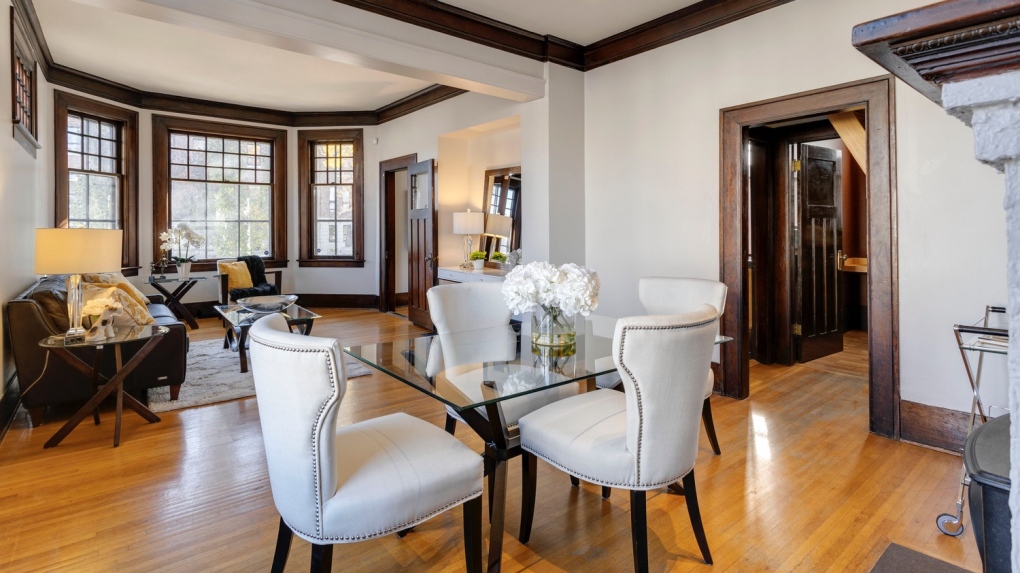

Type: House
Price: $685,000
Year Built: 1912
Property Size: 79.8 sq. m
Lot Size: 226 sq. m
Price Growth: 11.5 per cent year-over-year
On the main floor of this Calgary home are 10-foot ceilings and a large bay window. The corner lot has one bedroom plus a den, as well as one bathroom. The kitchen features white cabinetry, an exposed brick wall and stainless steel appliances, while the living area has a gas fireplace with a mantle. Oak floors installed when the home was first built in 1912 run across both storeys of the home.
WINDSOR-ESSEX
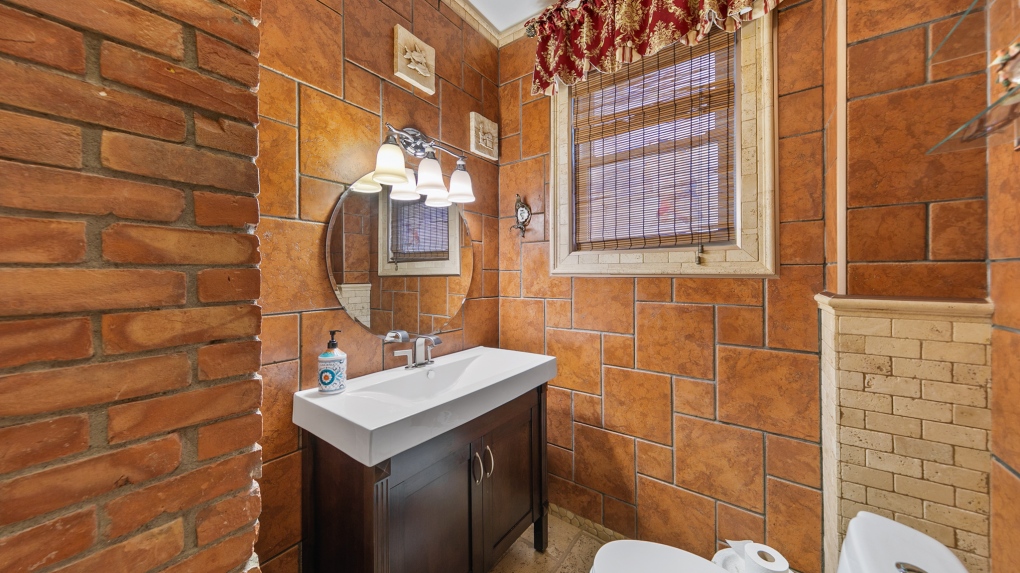

Type: House
Price: $699,900
Year Built: 1900
Property Size: 213.68 sq. m
Lot Size: 450 sq. m
Price Growth: 10.8 per cent year-over-year
While it may be more than 100 years old, this Windsor, Ont., home has been restored throughout the years. A brick porch sits at the entrance of the five-bedroom home, which also features custom stonework in the bathrooms. The sunroom leads to a backyard with a deck and gazebo. There is also an open-concept loft with a skylight.
SOUTHEAST SASKATCHEWAN


Type: House
Price: $364,900
Year Built: 1985
Property Size: 119.10 sq. m
Lot Size: 767.29 sq. m
Price Growth: 9 per cent year-over-year
This four-bedroom, three-bathroom bungalow in Estevan, Sask., has had various upgrades since it was built in 1985. In addition to living, dining and kitchen areas on the main floor, the basement features a sizeable family room with built-in cabinetry and a gas fireplace. Also in the basement is a den, storage room and hot tub. The fully fenced backyard includes a deck, garden and two sheds.
NEWFOUNDLAND AND LABRADOR
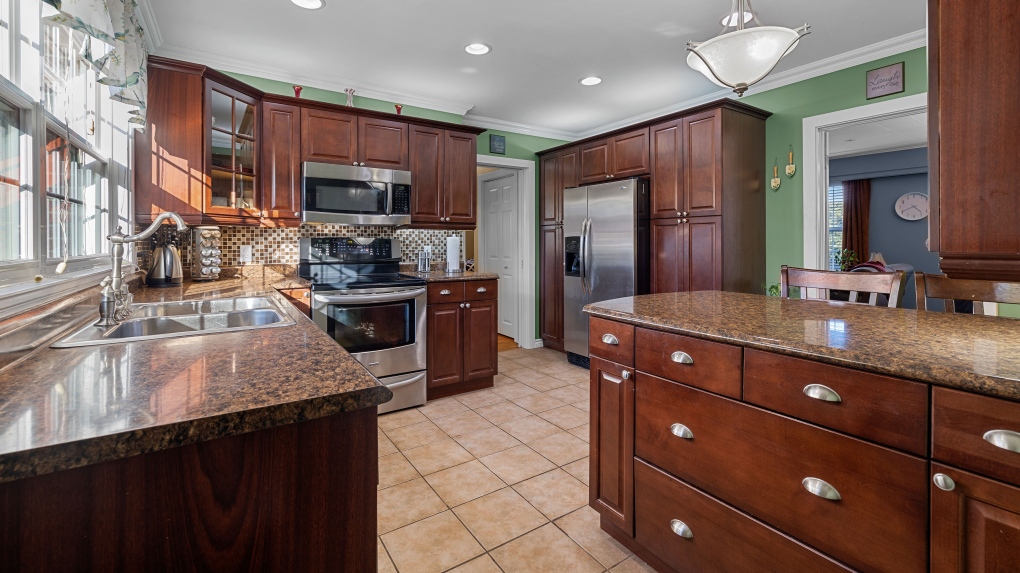

Type: House
Price: $309,900
Year Built: 1954
Property Size: 212 sq. m
Lot Size: under 0.2 hectares
Price Growth: 8 per cent year-over-year
This 212-square-metre home in St. John’s, N.L., comes with a large updated kitchen, complete with in-floor heating and ceramic tile. Making up the rest of the home is a large living and dining area, as well as four bedrooms and two bathrooms. In the basement is a laundry room and family room. The detached home is situated within walking distance of a hospital and grocery stores.
INTERIOR BRITISH COLUMBIA
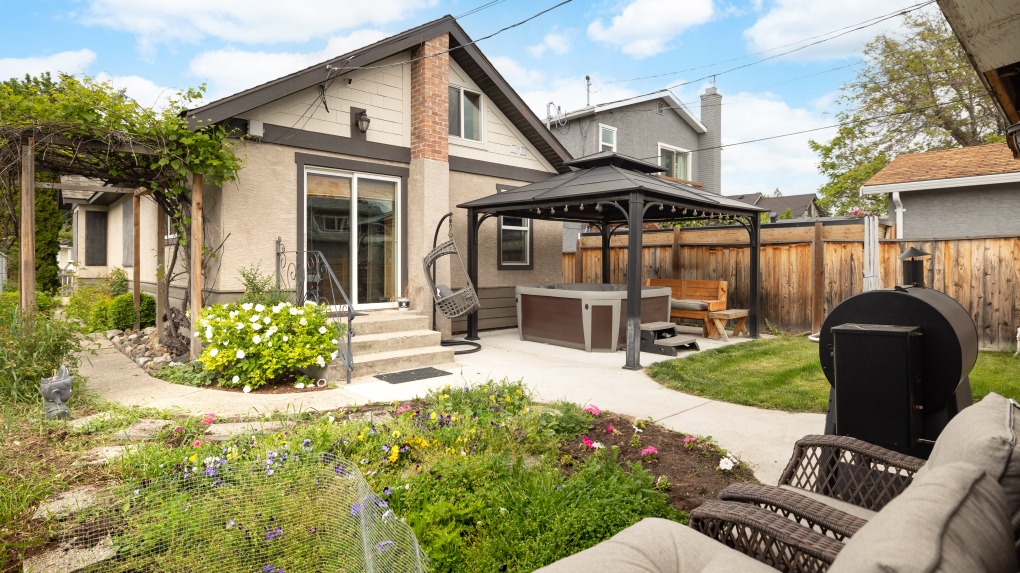

Type: House
Price: $799,900
Year Built: 1940
Property Size: 129.88 sq. m
Lot Size: under 0.4 hectares
Price Growth: 6.1 per cent year-over-year
Located in Kelowna, B.C., this 130-square-metre house is surrounded by greenery. The large backyard serves as the ideal outdoor living space, complete with a concrete patio and flower garden. Inside are two bathrooms, updated to include heated flooring, as well as two bedrooms. The home also has an open-concept living and dining area that connects to the kitchen.
MONTREAL


Type: Apartment
Price: $499,000
Year Built: 2015
Property Size: 68 sq. m
Lot Size: N/A
Price Growth: 5.7 per cent year-over-year
Located in Montreal’s Griffintown neighbourhood is this two-bedroom, one-bathroom corner apartment. Nine-foot floor-to-ceiling windows are found throughout the unit, which features an open-concept floor plan and private balcony. In the condominium are amenities such as a picnic area, heated outdoor pool and rooftop terrace with 360-degree views of downtown Montreal.
TORONTO
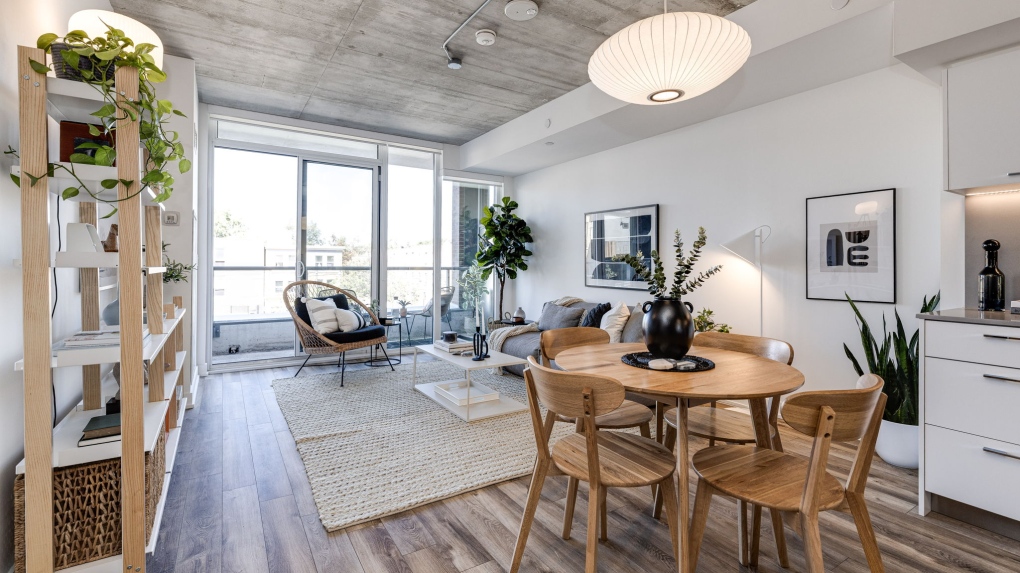

Type: Apartment
Price: $999,000
Year Built: 2022
Property Size: 107.77 sq. m
Lot Size: N/A
Price Growth: 4.3 per cent year-over-year
Polished concrete ceilings in this apartment unit serve as a stark contrast to its modern design. Along with three bedrooms and two bathrooms, this corner unit in Toronto’s Leslieville neighbourhood also has a walk-in closet and a 100-square-foot balcony offering north-facing views of the city. Floor-to-ceiling windows also allow plenty of natural light to seep in.
WINNIPEG
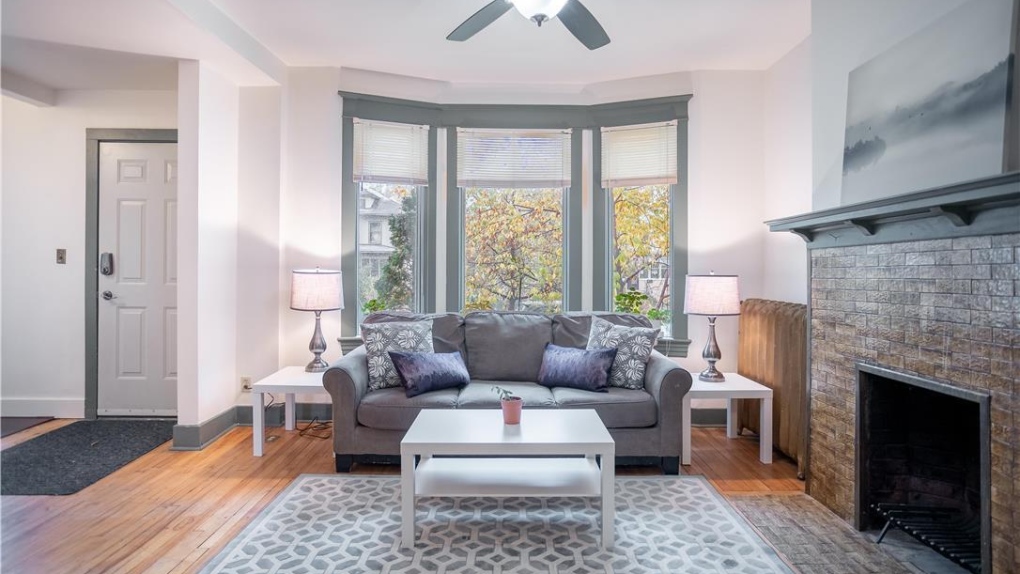

Type: House
Price: $389,900
Year Built: 1909
Property Size: 160.91 sq. m
Lot Size: 306.58 sq. m
Price Growth: 2.2 per cent year-over-year
This home in Winnipeg’s Wolseley neighbourhood spans two-and-a-half storeys. Near the entrance is a living room with a fireplace mantel, which leads to dining and kitchen areas. Also on the main floor is a newly renovated bathroom with a walk-in shower. On the upper floor is a laundry facility, two bedrooms and a four-piece bathroom. Meanwhile, the partially finished basement includes a recreation room, bathroom and bedroom.
News
Canada Child Benefit payment on Friday | CTV News – CTV News Toronto



More money will land in the pockets of Canadian families on Friday for the latest Canada Child Benefit (CCB) installment.
The federal government program helps low and middle-income families struggling with the soaring cost of raising a child.
Canadian citizens, permanent residents, or refugees who are the primary caregivers for children under 18 years old are eligible for the program, introduced in 2016.
The non-taxable monthly payments are based on a family’s net income and how many children they have. Families that have an adjusted net income under $34,863 will receive the maximum amount per child.
For a child under six years old, an applicant can annually receive up to $7,437 per child, and up to $6,275 per child for kids between the ages of six through 17.
That translates to up to $619.75 per month for the younger cohort and $522.91 per month for the older group.
The benefit is recalculated every July and most recently increased 6.3 per cent in order to adjust to the rate of inflation, and cost of living.
To apply, an applicant can submit through a child’s birth registration, complete an online form or mail in an application to a tax centre.
The next payment date will take place on May 17.
News
Capital gains tax change draws ire from some Canadian entrepreneurs worried it will worsen brain drain – CBC.ca
A chorus of Canadian entrepreneurs and investors is blasting the federal government’s budget for expanding a tax on the rich. They say it will lead to brain drain and further degrade Canada’s already poor productivity.
In the 2024 budget unveiled Tuesday, Finance Minister Chrystia Freeland said the government would increase the inclusion rate of the capital gains tax from 50 per cent to 67 per cent for businesses and trusts, generating an estimated $19 billion in new revenue.
Capital gains are the profits that individuals or businesses make from selling an asset — like a stock or a second home. Individuals are subject to the new changes on any profits over $250,000.
The government estimates that the changes would impact 40,000 individuals (or 0.13 per cent of Canadians in any given year) and 307,000 companies in Canada.
However, some members of the business community say that expanding the taxable amount will devastate productivity, investment and entrepreneurship in Canada, and might even compel some of the country’s talent and startups to take their business elsewhere.
Finance Minister Chrystia Freeland unveiled the government’s 2024 federal budget, with spending targeted at young voters and a plan to raise capital gains taxes for some of the wealthiest Canadians.
Benjamin Bergen, president of the Council of Canadian Innovators (CCI), said the capital gains tax has overshadowed parts of the federal budget that the business community would otherwise be excited about.
“There were definitely some other stars in the budget that were interesting,” he said. “However, the … capital gains piece really is the sun, and it’s daylight. So this is really the only thing that innovators can see.”
The CCI has written and is circulating an open letter signed by more than 1,000 people in the Canadian business community to Trudeau’s government asking it to scrap the tax change.
Shopify CEO Tobi Lütke and president Harley Finkelstein also weighed in on the proposed hike on X, formerly known as Twitter.
We need to be doing everything we can to turn Canada into the best place for entrepreneurs to build 🇨🇦<br><br>What’s proposed in the federal budget will do the complete opposite. Innovators and entrepreneurs will suffer and their success will be penalized — this is not a wealth tax,…
—@harleyf
Former finance minister Bill Morneau said his successor’s budget disincentivizes businesses from investing in the country’s innovation sector: “It’s probably very troubling for many investors.”
Canada’s productivity — a measure that compares economic output to hours worked — has been relatively poor for decades. It underperforms against the OECD average and against several other G7 countries, including the U.S., Germany, U.K. and Japan, on the measure.
Bank of Canada senior deputy governor Carolyn Rogers sounded the alarm on Canada’s lagging productivity in a speech last month, saying the country’s need to increase the rate had reached emergency levels, following one of the weakest years for the economy in recent memory.
The government said it was proposing the tax change to make life more affordable for younger generations and fund efforts to boost housing supply — and that it would support productivity growth.
A challenge for investors, founders and workers
The change could have a chilling effect for several reasons, with companies already struggling to access funding in a high interest rate environment, said Bergen.
He questioned whether investors will want to fund Canadian companies if the government’s taxation policies make it difficult for those firms to grow — and whether founders might just pack up.
The expanded inclusion rate “is just one of the other potential concerns that firms are going to have as they’re looking to grow their companies.”


He said the rejigged tax is also an affront to high-skilled workers from low-innovation sectors who might have taken the risk of joining a startup for the opportunity, even taking a lower wage on the chance that a firm’s stock options grow in value.
But Lindsay Tedds, an associate economics professor at the University of Calgary, said the tax change is one of the most misunderstood parts of the federal budget — and that its impact on the country’s talent has been overstated.
“This is not a major innovation-biting tax change treatment,” Tedds said. “In fact, when you talk to real grassroots entrepreneurs that are setting up businesses, tax rates do not come into their decision.”
As for productivity, Tedds said Canadians might see improvements in the long run “to the degree that some of our productivity problems are driven by stresses like housing affordability, access to child care, things like that.”
‘One foot on the gas, one foot on the brake’
Some say the government is sending mixed messages to entrepreneurs by touting tailored tax breaks — like the Canada Entrepreneurs’ Incentive, which reduces the capital gains inclusion rate to 33 per cent on a lifetime maximum of $2 million — while introducing measures they say would dampen investment and innovation.
“They seem to have one foot on the gas, one foot on the brake on the very same file,” said Dan Kelly, president of the Canadian Federation of Independent Business.
Some business groups are worried that new capital gains tax changes could hurt economic growth. But according to Small Business Minister Rechie Valdez, most Canadians won’t be impacted by that change — and it’s a move to create fairness.
A founder may be able to sell their successful company with a lower capital gains treatment than otherwise possible, he said.
“At the same time, though, big chunks of it may be subject to a higher rate of capital gains inclusion.”
Selling a company can fund an individual’s retirement, he said, which is why it’s one of the first things founders consider when they think about capital gains.
Mainstreet NS7:03Ottawa is proposing a hike to capital gains tax. What does that mean?
Tuesday’s federal budget includes nearly $53 billion in new spending over the next five years with a clear focus on affordability and housing. To help pay for some of that new spending, Ottawa is proposing a hike to the capital gains tax. Moshe Lander, an economics lecturer at Concordia University, joins host Jeff Douglas to explain.
Dennis Darby, president and CEO of Canadian Manufacturers & Exporters, says he was disappointed by the change — and that it sends the wrong message to Canadian industries like his own.
He wants to see the government commit to more tax credit proposals like the Canada Carbon Rebate for Small Businesses, which he said would incentivize business owners to stay and help make Canada competitive with the U.S.
“We’ve had a lot of difficulties attracting investment over the years. I don’t think this will make it any better.”
Tech titan says change will only impact richest of the rich


Toronto tech entrepreneur Ali Asaria will be one of those subject to the expanded capital gains inclusion rate — but he says it’s only fair.
“It’s going to really affect the richest of the rich people,” Asaria, CEO of open source platform Transformer Lab and founder of well.ca, told CBC News.
“The capital gains exemption is probably the largest tax break that I’ve ever received in my life,” he said. “So I know a lot about what that benefit can look like, but I’ve also always felt like it was probably one of the most unfair parts of the tax code today.”
While Asaria said Canada needs to continue encouraging talent to take risks and build companies in the country, taxation policies aren’t the most major problem.
“I think that the biggest central issue to the reason why people will leave Canada is bigger issues, like housing,” he said.
“How do we make it easier to live in Canada so that we can all invest in ourselves and invest in our companies? That’s a more important question than, ‘How do we help the top 0.13 per cent of Canadians make more money?'”
News
Canada Child Benefit payment on Friday | CTV News – CTV News Toronto



More money will land in the pockets of Canadian families on Friday for the latest Canada Child Benefit (CCB) installment.
The federal government program helps low and middle-income families struggling with the soaring cost of raising a child.
Canadian citizens, permanent residents, or refugees who are the primary caregivers for children under 18 years old are eligible for the program, introduced in 2016.
The non-taxable monthly payments are based on a family’s net income and how many children they have. Families that have an adjusted net income under $34,863 will receive the maximum amount per child.
For a child under six years old, an applicant can annually receive up to $7,437 per child, and up to $6,275 per child for kids between the ages of six through 17.
That translates to up to $619.75 per month for the younger cohort and $522.91 per month for the older group.
The benefit is recalculated every July and most recently increased 6.3 per cent in order to adjust to the rate of inflation, and cost of living.
To apply, an applicant can submit through a child’s birth registration, complete an online form or mail in an application to a tax centre.
The next payment date will take place on May 17.
-
Media14 hours ago
DJT Stock Rises. Trump Media CEO Alleges Potential Market Manipulation. – Barron's
-
Media16 hours ago
Trump Media alerts Nasdaq to potential market manipulation from 'naked' short selling of DJT stock – CNBC
-
Investment15 hours ago
Private equity gears up for potential National Football League investments – Financial Times
-



 Sports19 hours ago
Sports19 hours ago2024 Stanley Cup Playoffs 1st-round schedule – NHL.com
-
Real eState7 hours ago
Botched home sale costs Winnipeg man his right to sell real estate in Manitoba – CBC.ca
-
Art18 hours ago
Enter the uncanny valley: New exhibition mixes AI and art photography – Euronews
-



 Health24 hours ago
Health24 hours agoToronto reports 2 more measles cases. Use our tool to check the spread in Canada – Toronto Star
-
Business15 hours ago
Gas prices see 'largest single-day jump since early 2022': En-Pro International – Yahoo Canada Finance






